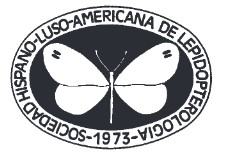Relationship between vegetation characteristics and Lepidoptera diversity in the Hyrcanian forest, Iran (Insecta: Lepidoptera)
DOI:
https://doi.org/10.57065/shilap.73Keywords:
Insecta, Lepidoptera, conservation, richness, temperate forest, vegetation, IranAbstract
The patterns of diversity of Lepidoptera and its relationship with environmental characteristics in the Hyrcanian forests of northern Iran have not been investigated so far, while such studies are extremely effective in restoring forest biodiversity. This study aimed to assess the relationships between vegetation characteristics and the abundance and diversity of Lepidoptera in Darabkola forest, Sari district (Mazandaran province, northern Iran). Light trapping yielded a total of 474 exemplars representing 84 species and belonging to 16 families. 31 plant species belonged to 28 genera and 23 families were recorded of three distinct forests in the region. The total number of plant species and Fisher’s α showed the significant difference. The regression analysis indicated that the Lepidoptera abundance was correlated with basal area, diameter at breast height and tree density, although a significant relationship was not observed between plant characteristics and Fisher’s α of Lepidoptera. The lack of a significant relationship between plant diversity and the abundance and diversity of Lepidoptera represents the weak role of plant diversity in creating diversity patterns in forest ecosystems.
Downloads
Global Statistics ℹ️
|
448
Views
|
304
Downloads
|
|
752
Total
|
|
References
AARVIK, L., BENGTSSON, B. Å., ELVEN, H., IVINSKIS, P., JÜRIVETE, U., KARSHOL, O., MUTANEN, M. & SAVENKOV, N., 2017.– Nordic-Baltic Checklist of Lepidoptera.– Norwegian Journal of Entomology, 3: 1-237.
AXMACHER, J. C., TÜNTE, H., SCHRUMPF, M., MÜLLER-HOHENSTEIN, K., LYARUU, H. V. M. & FIEDLER, K., 2004.– Diverging diversity patterns of vascular plants and geometrid moths during forest regeneration on Mt Kilimanjaro, Tanzania.– Journal of Biogeography, 31: 895-904. DOI: https://doi.org/10.1111/j.1365-2699.2004.00995.x
AXMACHER, J. C., BREHM, G., HEMP, A., TÜNTE, H., LYARUU, H. V., MÜLLER-HOHENSTEIN, K. & FIEDLER, K., 2009.– Determinants of diversity in Afrotropical herbivorous insects (Lepidoptera: Geometridae): plant diversity, vegetation structure or abiotic factors?- Journal of Biogeography, 36(2): 337-349. DOI: https://doi.org/10.1111/j.1365-2699.2008.01997.x
AXMACHER, J. C., LIU, Y., WANG, C., LI, L. & YU, Z., 2011.– Spatial α-diversity patterns of diverse insect taxa in Northern China: Lessons for biodiversity conservation.– Biological Conservation, 144: 2362-2368. DOI: https://doi.org/10.1016/j.biocon.2011.06.016
BORER, E. T., SEABLOOM, E. W. & TILMAN, D., 2012.– Plant diversity controls arthropod biomass and temporal stability.– Ecology letters, 15: 1457-64. DOI: https://doi.org/10.1111/ele.12006
BREHM, G., HOMEIER, J. & FIEDLER, K., 2003.– Beta diversity of geometrid moths (Lepidoptera: Geometridae) in an Andean montane rainforest.– Diversity and Distributions, 9: 351-366. DOI: https://doi.org/10.1046/j.1472-4642.2003.00023.x
CHOI, S. W., 2011.– Moth diversity and identification of indicator species in temperate forests of southern South Korea.– Annals of the Entomological Society of America, 104: 952-959. DOI: https://doi.org/10.1603/AN10130
COOK-PATTON, S., MCART, S. H., PARACHNOWITSCH, A. L., THALER, J. S. & AGRAWAL, A. A., 2011.– A direct comparison of the consequences of plant genotypic and species diversity on communities and ecosystem function.– Ecology, 92: 915-923. DOI: https://doi.org/10.1890/10-0999.1
CUEVAS-REYES, P., SIEBE, C., MARTÍNEZ-RAMOS, M. & OYAMA, K., 2003.– Species richness of gallforming insects in a tropical rain forest: correlations with plant diversity and soil fertility.– Biodiversity and Conservation, 12: 411-422. DOI: https://doi.org/10.1023/A:1022415907109
DELABYE, S., MAICHER, V., SÁFIÁN, S., DOLEZAL, J., ALTMAN, J., JANEGEK, S., KOBE, I. N., MURKWE, M., SEBEK, P. & TROPEK, R., 2021.– Butterfly and moth communities differ in their response to habitat structure in rainforests of Mount Cameroon.– Biotropica, 53(2): 567-580. DOI: https://doi.org/10.1111/btp.12900
EBELING, A., HINES, J., HERTZOG, L. R., LANGE, M., MEYER, S. T., SIMONS, N. K. & WEISSER, W. W., 2018.– Plant diversity effects on arthropods and arthropod-dependent ecosystem functions in a biodiversity experiment.– Basic and Applied Ecology, 26: 50-63. DOI: https://doi.org/10.1016/j.baae.2017.09.014
FERRO, V. G. & ROMANOWSKI, H. P., 2012.– Diversity and composition of tiger moths (Lepidoptera: Arctiidae) in an area of Atlantic Forest in southern Brazil: is the fauna more diverse in the grassland or in the forest.– Revista Brasileira de Zoologia, 29: 7-18. DOI: https://doi.org/10.1590/S1984-46702012000100002
HAWKINS, B. A. & PORTER, E. E., 2003.– Does herbivore diversity depend on plant diversity? The case of California butterflies.– American naturalist, 161: 40-49. DOI: https://doi.org/10.1086/345479
HOOPER, D. U., CHAPIN III, F. S., EWEL, J. J., HECTOR, A., INCHAUSTI, P., LAVOREL, S., LAWTON, J. H., LODGE, D. M., LOREAU, M., NAEEM, S. & SCHMID, B., 2005.– Effects of biodiversity on ecosystem functioning: a consensus of current knowledge.– Ecological monographs, 75(1): 3-35. DOI: https://doi.org/10.1890/04-0922
HORVATH, B., TOTH, V. & LAKATOS, F., 2016.– Relation between canopy-layer traits and moth communities in sessile oak-hornbeam forests.– North-Western Journal of Zoology, 12: 213-219.
KRISTENSEN, N. P., SCOBLE, M. J. & KARSHOLT, O., 2007.– Lepidoptera phylogeny and systematics: the state of inventorying moth and butterfly diversity.– Zootaxa, 1668: 699-747. DOI: https://doi.org/10.11646/zootaxa.1668.1.30
MAGURA, T., TÓTHMÉRÉSZ, B. & ELEK, Z., 2005.– Impacts of leaf-litter addition on carabids in a conifer plantation.– Biodiversity and Conservation, 14: 475-91. DOI: https://doi.org/10.1007/s10531-004-7307-8
MERCKX, T., FEBER, R. E., RIORDAN, P., TOWNSEND, M. C., BOURN, N. A., PARSONS, M. S. & MACDONALD, D. W., 2009.– Optimizing the biodiversity gain from agri-environment schemes.– Agriculture, Ecosystems & Environment, 130(3-4): 177-182. DOI: https://doi.org/10.1016/j.agee.2009.01.006
MERCKX, T., DE MIRANDA, M. D. & PEREIRA, H. M., 2019.– Habitat amount, not patch size and isolation, drives species richness of macro-moth communities in countryside landscapes.– Journal of Biogeography, 46: 56-967. DOI: https://doi.org/10.1111/jbi.13544
MÜLLER, J., VARANDI, H. B., BABAII, M. R., FARASHIANI, M. E., SAGEB-TALEBI, K., LANGE, F., GOSSNER, M. M., JARZABEK-MÜLLER, A., ROTH, N., THORN, S. & SEIBOLD, S., 2018.– The diversity of saproxylic insects (Coleoptera, Heteroptera) on four tree species of the Hyrcanian forest in Iran.– Journal of Insect Conservation, 22(3): 607-625. DOI: https://doi.org/10.1007/s10841-018-0089-1
NYAFWONO, M., VALTONEN, A., NYEKO, P., OWINY, A. A. & ROININEN, H., 2015.– Tree community composition and vegetation structure predict butterfly community recovery in a restored Afrotropical rain forest.– Biodiversity and Conservation, 24: 1473-1485. DOI: https://doi.org/10.1007/s10531-015-0870-3
OXBROUGH, A., FRENCH, V., IRWIN, S., KELLY, T. C., SMIDDY, P. & O’HALLORAN, J., 2012.– Can mixed species stands enhance arthropod diversity in plantation forests?- Forest Ecology Management, 270: 11-18. DOI: https://doi.org/10.1016/j.foreco.2012.01.006
ÖZDEMIR, M., 2019.– Habitat preference of Geometridae species in western black sea region of Turkey (Lepidoptera: Geometridae).– SHILAP Revista de lepidopterología, 47: 673-684. DOI: https://doi.org/10.57065/shilap.496
PEARSON, C. V. & DYER, L. A., 2006.– Trophic diversity in two grassland ecosystems.– Journal of Insect Science, 6: 1-11. DOI: https://doi.org/10.1673/2006_06_25.1
RABIEH, M. M., 2018.– Biodiversity of noctuid moths (Lepidoptera: Noctuidae) in the agroecosystems of Mashhad County.– Biodiversity International Journal, 2: 147-151. DOI: https://doi.org/10.15406/bij.2018.02.00057
RABL, D., GOTTSBERGER, B., BREHM, G., HOFHANSL, F. & FIEDLER, K., 2020.– Moth assemblages in Costa Rica rain forest mirror small-scale topographic heterogeneity.– Biotropica, 52: 288-301. DOI: https://doi.org/10.1111/btp.12677
ROOT, H. T., VERSCHUYL, J., STOKELY, T., HAMMOND, P., SCHERR, M. A. & BETTS, M. G., 2017.– Plant diversity enhances moth diversity in an intensive forest management experiment.– Ecological Applications, 27: 134-142. DOI: https://doi.org/10.1002/eap.1426
SAGHEB-TALEBI, K., SAJEDI, T. & POURHASHEMI, M., 2014.– Plant and vegetation: Forests of Iran-a treasure from the past, a hope for the future: VIII + 152 pp. Springer. Dordrecht. DOI: https://doi.org/10.1007/978-94-007-7371-4
SCHERBER, C., EISENHAUER, N., WEISSER, W. W., SCHMID, B., VOIGT, W., FISCHER, M., SCHULZE, E.- D., ROSCHER, CH., WEIGELT, A., ALLAN, E., BEßLER, H., BONKOWSKI, M., BUCHMANN, N., BUSCOT, F., CLEMENT, L. W., EBELING, A., ENGELS, CH., HALLE, S., KERTSCHER, I., KLEIN, A.-
M., KOLLER, R., KÖNIG, S., KOWALSKI, E., KUMMER, V., KUU, A., LANGE, M., LAUTERBACH, D., MIDDELHOFF, C., MIGUNOVA, V. D., MILCU, A., MÜLLER, R., PARTSCH, S., PETERMANN, J. S., RENKER, C., ROTTSTOCK, T., SABAIS, A., SCHEU, S., SCHUMACHER, J., TEMPERTON, V. M. &
TSCHARNTKE, T., 2010.– Bottom-up effects of plant diversity on multitrophic interactions in a biodiversity experiment.– Nature, 468: 553-556.
SILANDER, J. A., 2001.– Temperate forests.– Encyclopedia of Biodiversity, 5: 607-625. DOI: https://doi.org/10.1016/B0-12-226865-2/00267-4
TYLER, T., 2020.– Relationship between moth (night active Lepidoptera) diversity and vegetation characteristics in southern Sweden.– Journal of Insect Conservation, 24: 1005-1015. DOI: https://doi.org/10.1007/s10841-020-00270-y
UHL, B., WÖLFING, M., FIALA, B. & FIEDLER, K., 2016.– Micro-moth communities mirror environmental stress gradients within a Mediterranean nature reserve.– Basic and Applied Ecology, 17: 273-281. DOI: https://doi.org/10.1016/j.baae.2015.10.002
UNSICKER, S. B., BAER, N., KAHMEN, A., WAGNER, M., BUCHMANN, N. & WEISSER, W. W., 2006.– Invertebrate herbivory along a gradient of plant species diversity in extensively managed grasslands.– Oecologia, 150: 233-246. DOI: https://doi.org/10.1007/s00442-006-0511-3
ZOU, Y., SANG, W., ZHOU, H., HUANG, L. & AXMACHER, J. C., 2014.– Altitudinal diversity patterns of ground beetles (Coleoptera: Carabidae) in the forests of Changbai Mountain, Northeast China.– Insect Conservation and Diversity, 7: 161-171. DOI: https://doi.org/10.1111/icad.12039
ZOU, Y., SANG, W. G., WARREN-THOMAS, E. & AXMACHER, J. C., 2016.– Geometrid moth assemblages reflect high conservation value of naturally regenerated secondary forests in temperate China.– Forest Ecology and Management, 374: 111-118. DOI: https://doi.org/10.1016/j.foreco.2016.04.054
Published
How to Cite
Issue
Section
License
Copyright (c) 2022 G. Hajizadeh, H. Jalilvand, M. R. Kavosi, H. B. Varandi

This work is licensed under a Creative Commons Attribution 4.0 International License.
The author SS retains his trademark and patent rights to any process or procedure within the article.
The author retains the right to share, distribute, perform and publicly communicate the article published in SHILAP Revista de lepidopterología, with initial acknowledgement of its publication in SHILAP Revista de lepidopterología.
The author retains the right to make a subsequent publication of his work, from using the article to publishing it in a book, provided that he indicates its initial publication in SHILAP Revista de lepidopterología.
Each submission to SHILAP Revista de lepidopterología must be accompanied by an acceptance of copyright and acknowledgement of authorship. By accepting them, authors retain copyright of their work and agree that the article, if accepted for publication by SHILAP Revista de lepidopterología, will be licensed for use and distribution under a "Creative Commons Attribution 4.0 International" (CC BY 4.0) licence that allows third parties to share and adapt the content for any purpose giving appropriate credit to the original work.
You may read here the basic information and the legal text of the license. The indication of the CC BY 4.0 License must be expressly stated in this way when necessary.
As of 2022, the content of the print and digital version is licensed under a "Creative Commons Attribution 4.0 International License" (CC BY 4.0), licence that allows third parties to share and adapt the content for any purpose giving appropriate credit to the original work.
Previous content in the journal was published under a traditional copyright licence; however, the archive is available for free access.
When using the contents of SHILAP Revista de lepidopterología published before 2022, including figures, tables or any other material in printed or electronic format belong to the authors of the articles, the authors must obtain the permission of the copyright holder. Legal, financial and criminal liabilities in this respect belong to the author(s).
In application of the Principle of Priority of the International Code of Zoological Nomenclature, no other version than the one published by the publisher may be deposited in repositories, personal websites or similar.





























